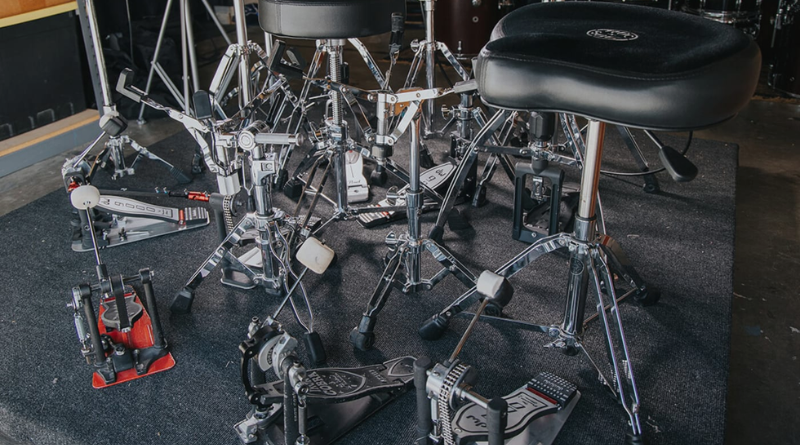Shipping a drum set is something that drummers don’t think of until they have to do it. When it gets to that, a lot of drummers get overwhelmed at the thought of packing the kit into boxes and somehow not paying too much to get it from A to B.
Whether you’re moving towns or selling your drum kit to someone else, it’s a good idea to know how the whole process works. It’s also good to have an estimate of how much it costs.
Here’s a quick guide to shipping a drum set. We’ll also give a few tips on how you can save a bit of money through the process.
Contents
Shipping Costs
The cost of shipping mostly depends on the weight of your item and how far you want it to travel. Seeing as drum kits are big instruments, the cost of shipping will range from $50 to $200, depending on those factors.
If you want to ship the drum kit to another country, it will cost more.
So, it’s always good to put $200 aside if you’re planning to ship your drum set somewhere in your country. It may not end up costing that much, but it’s good to be prepared for the worst.
The cost also depends on what companies you use, and there are several shipping companies to pick from. Some of them are better for musical instruments than others, though.
Best Shipping Companies
If you live in the US, the best and most reliable shipping companies to go with are UPS and FedEx. They tend to charge by weight, and that will allow you to save on costs if you pack your drums smartly before sending them off.
If you’re in Europe, DHL is another excellent company to go with.
Those three companies are regularly used by major instrument retailers as well, so they’re typically good at knowing what they’re doing when transporting gear.
It’s okay to use other shipping companies. You may even find some options that are more affordable, but you should always look for good references first. Drum kits have so many components that have the potential to get damaged, so it’s better to go with reliability over affordability most times.
How to Pack a Drum Kit for Shipping
If you’re choosing to go with a shipping company that charges by weight, the best way to save money is by packing the boxes yourself and making them as light as possible.
Here’s a quick guide on how to pack a drum kit in boxes to get the most out of the space you have.
Shells

Drum shells can all fit in one big box. You’ll need to remove the drumheads from every shell you have and then place them from biggest to smallest inside each other like a Russian babushka.
By doing this, you’ll eliminate the need to have multiple boxes for each drum shell, and the shells with no drumheads will be slightly lighter.
Just make sure to keep the rims on, as you don’t want the bearing edges to be exposed. If the bearing edges get damaged, the tone of the drums will be heavily affected.
You can then take all the drumheads and wrap them up tightly with transporting plastic. It will also help to wrap them in bubble wrap to keep them from getting damaged. Put those in a separate box that is shallower.
Cymbals

We’d suggest putting all the cymbals in one cymbal bag and then wrapping that bag up with transporting plastic and bubble wrap. While this will end up being quite heavy, it’s more important to protect your cymbals than it is to save a few bucks on shipping.
Once you’ve wrapped the cymbals up, you can place them in a box.
If you only have a fabric cymbal bag, we strongly suggest that you get a hard plastic one. These are a lot more durable, giving your cymbals more protection. If something heavy falls on a hard case, it won’t affect the cymbals inside, whereas a soft case doesn’t leave much room for protection from heavy things.
Hardware

Hardware is always the heaviest part of any drum kit. Like the cymbals, we suggest that you get a hard plastic hardware case.
It will be quite heavy, but it’s better to have all your hardware stands in one spot rather than having the weight distributed over several different boxes. The fewer boxes you have, the less you’re likely to pay for shipping.
To make the case as light as possible, you should strip the hardware stands down to their smallest forms. Every cymbal stand has at least two arms. Make sure to pull the top arm out and place it beside the bottom one that is thicker. If you keep those arms in, the stand will feel heavier.
Business to Business Addresses
The other tip that we have to save money is to ship your drum set to a business address. You typically need to pay more if you ship it to a home address.
If you don’t have a business address of your own, try to get someone you know to sign for it at their business. Either give them some of the money that you would have saved for their role or buy them a beer for being a good friend to you.
Is it Safe to Buy a Used Drum Set Online?
It’s fairly safe to buy a used drum kit online, especially if the seller has gone through a detailed process of packing the drum kit to be shipped.
There are always risks, though. The seller could pack the kit badly, and the parts could get damaged on their way to you, or you could get scammed entirely and not receive a drum kit at all after paying for it.
It’s always a good idea to get someone you know to go look at the drum kit if it’s in a different town or city. If you want to buy it, then get that person to help with the process of shipping it over.
If you’re buying a used drum set from official stores like Guitar Center or Reverb, then it’s perfectly safe to get. Those companies are very good at shipping gear safely.
Final Thoughts on How Much It Costs to Ship a Drum Set
Thankfully, shipping a drum set locally isn’t all that expensive. Drum kits are so big that one would assume it would cost several hundred dollars to move them across the country. You’ll only be paying up to $200 for the process.
Things get a bit more intense when shipping internationally, though. That’s something you have to look into on a company-by-company basis, and you’ll be paying a lot more than just $200.